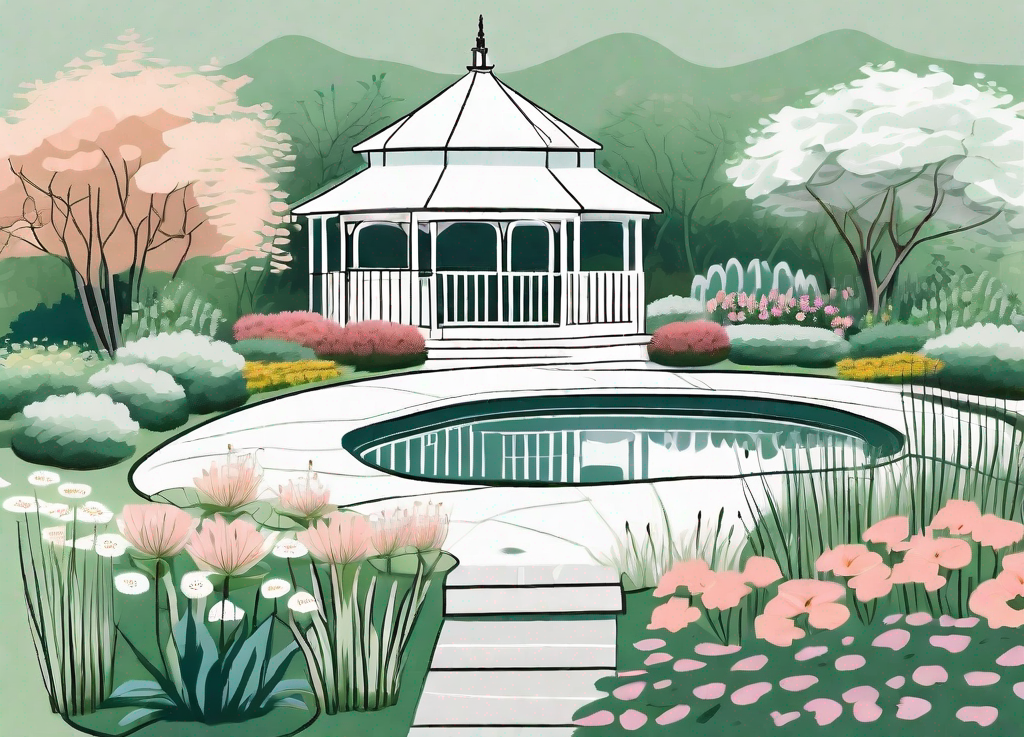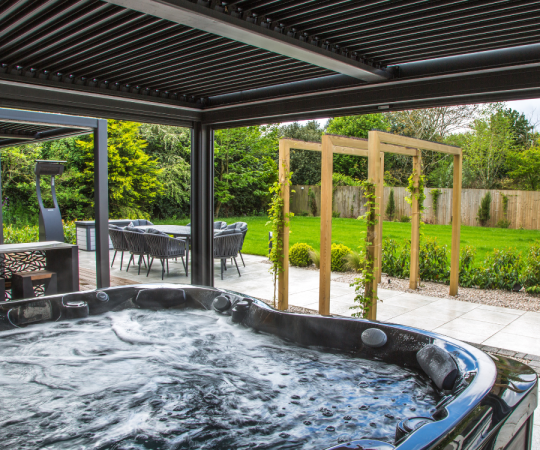Quick and Easy Garden Styling Tips – Autumn Inspired Planters


Gardening is a great way to enhance the beauty and functionality of your outdoor space. Whether you have a small terrace or a sprawling backyard, understanding the basics of garden design is crucial to creating a stunning and harmonious landscape. In this ultimate guide, we will delve into the key principles, features, and maintenance tips for designing your dream garden.
Before you start digging and planting, it’s essential to recognise the importance of planning in garden design. Taking the time to carefully consider your goals, preferences, and budget will greatly contribute to the success of your project. Proper planning ensures that your garden will be functional, visually appealing, and sustainable.
One of the key elements involved in garden design is proportion. Understanding how different plants, structures, and features interact with each other in terms of size and scale is vital for creating a balanced and harmonious layout. By considering proportion, you can prevent your garden from feeling overwhelming or sparse.
The impact of colour and texture cannot be underestimated in garden design. Choosing plants with complementary colours and varying textures will add depth and visual interest to your landscape. Whether you opt for a vibrant and colourful garden or a more muted and tranquil atmosphere, understanding the role of colour and texture is essential.
When it comes to garden design, there are various styles to choose from, each with its own unique characteristics and charm. From formal gardens with symmetrical patterns and neatly trimmed hedges to informal cottage gardens bursting with wildflowers and whimsical pathways, the style you choose will set the tone for your outdoor space.
In addition to style, the layout of your garden should also take into account the practical aspects of maintenance and accessibility. Consider how you will navigate through your garden and how easy it will be to tend to your plants. Creating pathways and incorporating seating areas can enhance both the functionality and enjoyment of your outdoor space.
Another important aspect of garden design is the consideration of seasonal changes. A well-designed garden should have something to offer throughout the year, whether it’s the vibrant blooms of spring, the lush greenery of summer, or the rich hues of autumn. By carefully selecting a variety of plants that bloom at different times, you can create a garden that is visually appealing and ever-changing.
Furthermore, incorporating elements such as water features, sculptures, or garden ornaments can add a touch of personality and create focal points within your garden. These features can be used to create a sense of tranquility, attract wildlife, or simply add a touch of whimsy to your outdoor space.
When planning your garden design, it’s also important to consider the environmental impact. Opting for native plants that are well-suited to your climate can help conserve water and reduce the need for pesticides or fertilisers. Additionally, incorporating sustainable practices such as composting and rainwater harvesting can further enhance the eco-friendliness of your garden.
Lastly, don’t forget about the importance of maintenance. While a well-designed garden can be visually stunning, it’s essential to consider the time and effort required to keep it looking its best. Be realistic about your gardening abilities and the amount of time you can dedicate to maintenance tasks such as pruning, weeding, and watering.
Assessing your garden’s potential is the first step in your design journey. Consider the size, shape, and orientation of your outdoor space. Take note of any existing features that may influence your design choices, such as trees, fences, or slopes. Understanding the unique characteristics of your garden will help you make more informed decisions.
When assessing your garden’s potential, it’s important to take into account the soil quality and drainage. These factors play a significant role in determining which plants will thrive in your garden. Conduct a soil test to determine the pH level and nutrient content of your soil. This will help you identify any necessary amendments or adjustments that need to be made to create a healthy growing environment for your plants.
Identifying your garden design style is another crucial step. Whether you lean towards a traditional, contemporary, or cottage garden aesthetic, defining your style will guide your plant selection, colour palette, and overall layout. Research different garden styles and find inspiration that resonates with your vision.
Once you have determined your garden design style, it’s time to consider the practical aspects of your garden. Think about how you will use the space and what activities you would like to accommodate. Do you envision a tranquil retreat for relaxation, a vibrant space for entertaining, or a productive vegetable garden? Understanding the intended purpose of your garden will help you create a layout that is both functional and aesthetically pleasing.
When planning your garden layout, it’s important to consider the principles of design. Balance, proportion, unity, rhythm, and focal points are all elements that contribute to a well-designed garden. Balance refers to the distribution of visual weight in your garden, while proportion ensures that the size and scale of elements are harmonious. Unity creates a sense of cohesion and harmony, while rhythm adds movement and flow. Focal points draw the eye and create visual interest. By incorporating these principles into your design, you can create a garden that is visually appealing and inviting.
Another aspect to consider when designing your garden is the selection of plants. Research different plant species and their specific requirements, such as sunlight, water, and soil conditions. Choose plants that are well-suited to your garden’s climate and microclimate. Consider the seasonal interest of plants, selecting a mix of evergreen and deciduous varieties to ensure year-round beauty. Additionally, think about the wildlife you would like to attract to your garden, such as birds or butterflies, and choose plants that provide food and shelter for them.
As you embark on your garden design journey, remember that gardening is a continuous learning process. Be open to experimentation and don’t be afraid to make changes as you gain experience and knowledge. Gardening is a rewarding and fulfilling hobby that allows you to connect with nature and create a space that brings you joy. So, embrace the journey and enjoy the process of transforming your outdoor space into a beautiful and thriving garden.

Now that you have a solid foundation, it’s time to delve deeper into garden design principles. By understanding the principles of design, you can create a cohesive and aesthetically pleasing garden that suits both your personal taste and the local climate.
Incorporating hardscape elements like paths, patios, and retaining walls not only enhances the functionality of your garden but also adds structure and visual interest. Select materials that complement your overall design style and consider how these structures will be used to connect different areas of your garden.
When it comes to garden design, one important principle to keep in mind is balance. Achieving a sense of balance in your garden can create a harmonious and visually appealing space. There are two types of balance to consider: symmetrical and asymmetrical.
Symmetrical balance is achieved when the elements on one side of the garden mirror the elements on the other side. This creates a sense of order and formality. For example, you could have two identical flower beds on either side of a central path, or two matching topiaries flanking the entrance to your garden.
On the other hand, asymmetrical balance is achieved when the elements on both sides of the garden are different but still visually balanced. This creates a more relaxed and informal feel. For example, you could have a large tree on one side of the garden and a group of smaller shrubs on the other side, creating a sense of balance without mirroring each other exactly.
Another important principle to consider is rhythm. Rhythm in garden design refers to the repetition of certain elements throughout the space. This repetition can create a sense of movement and flow, guiding the eye through the garden and creating a sense of unity.
For example, you could create rhythm by repeating certain plant species throughout your garden, or by using a specific color scheme that is repeated in different areas. This repetition can help create a cohesive and visually pleasing design.
When designing your garden, it’s also important to consider the local climate and the specific needs of the plants you choose. Different plants have different requirements for sunlight, water, and soil conditions, so it’s important to choose plants that will thrive in your specific climate.
Consider the amount of sunlight your garden receives throughout the day and choose plants that are suitable for that level of light. Similarly, consider the type of soil you have and choose plants that are well-suited to those conditions.
By taking these factors into consideration, you can create a garden that not only looks beautiful but also thrives in its environment. Remember to regularly maintain your garden by watering, pruning, and fertilising as needed to ensure its long-term health and beauty.
Choosing the right plants for your garden is a crucial aspect of garden design. Consider the local climate, soil conditions, and the amount of sunlight your garden receives. Select a variety of plants that bloom at different times to ensure seasonal interest and create a dynamic and vibrant display throughout the year.
Incorporating hardscape elements like water features, pergolas, or arbors can add a touch of elegance and functionality to your garden design. These structures can provide shade, privacy, or a focal point that draws the eye. Be sure to select materials and styles that harmonise with your overall design aesthetic.
Once your garden is complete, it’s important to consider the maintenance required to keep it looking its best. Seasonal care is crucial, as different plants have varying needs throughout the year. Prune, deadhead, and fertilise as necessary to encourage healthy growth and prolong the lifespan of your plants.
In addition to seasonal care, consider the long-term implications of your garden design. Anticipate how your plants and structures will grow and evolve over time. Plan for future maintenance requirements and think about how you can adapt your garden design to accommodate any changes or renovations.
Designing your own garden can be a rewarding and fulfilling experience. By understanding the basics of garden design, starting with a well-thought-out plan, and incorporating essential features and structures, you can create a stunning outdoor space that reflects your personal style and enhances your quality of life. So, roll up your sleeves, grab a trowel, and let your creativity blossom in the world of garden design!
And whenever you’re ready, we’ll be happy to come along and help you plan your garden upgrade. to get one of the friendly design team to take the stress out of designing your garden click below.